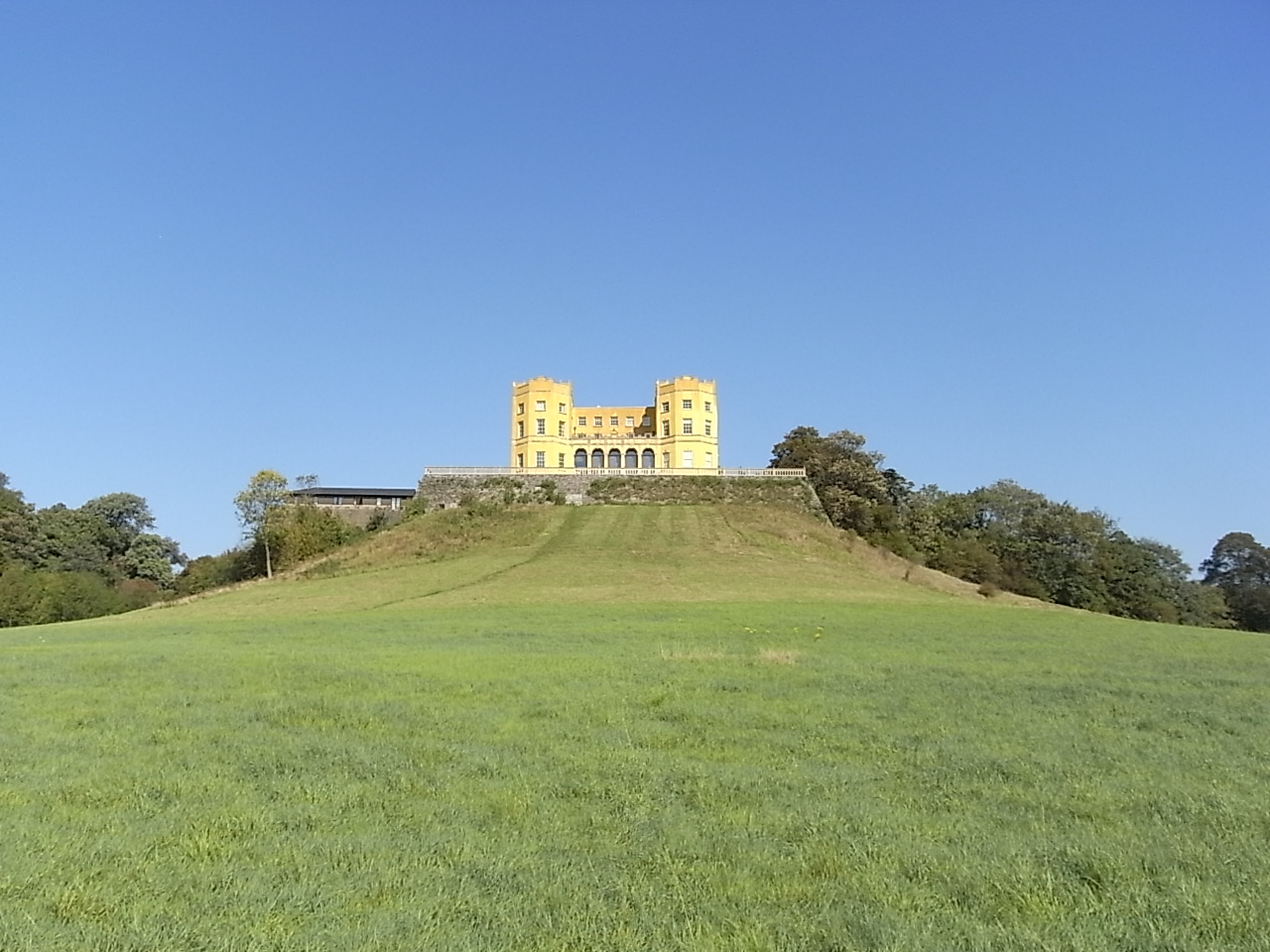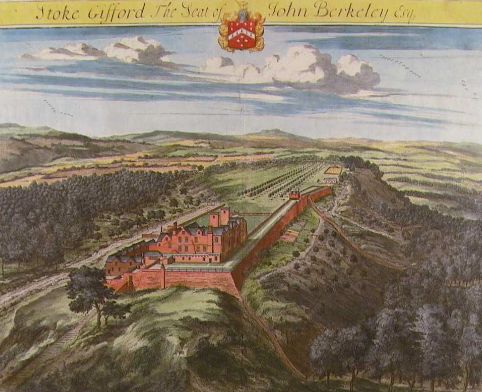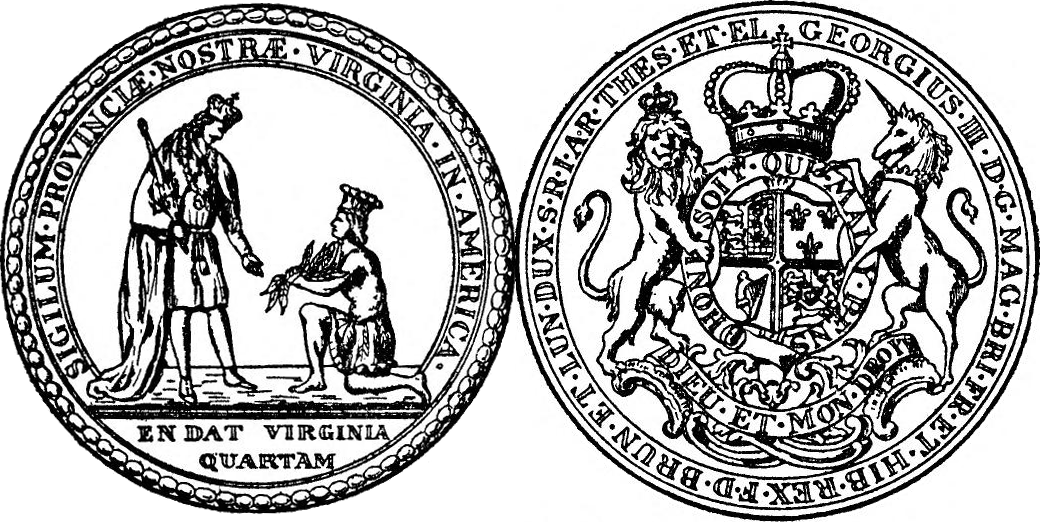|
Norborne Berkeley, 4th Baron Botetourt
Norborne Berkeley, 4th Baron Botetourt (c. 1717 – 15 October 1770), was a British courtier, member of parliament, and royal governor of the colony of Virginia from 1768 until his death in 1770. Life Norborne Berkeley was born about 1717, the only son of John Symes Berkeley of Stoke Gifford, Gloucestershire by his second wife Elizabeth, the daughter and coheiress of Walter Norborne of Calne, Wiltshire and the widow of Edward Devereux, 8th Viscount Hereford. The Berkeleys of Stoke Gifford were descended from Maurice de Berkeley (d. 1347), who had acquired the manor of Stoke Gifford in 1337, the second son of Maurice de Berkeley, 2nd Baron Berkeley (1271–1326). In 1726, Berkeley was admitted to Westminster School. He succeeded his father to Stoke Park in Stoke Gifford in 1736 and remodelled both the house (now known as the Dower House) and the gardens in the 1740s and 1750s with the help of the designer Thomas Wright of Durham. He was appointed Colonel of the newly ... [...More Info...] [...Related Items...] OR: [Wikipedia] [Google] [Baidu] |
The Right Honourable
''The Right Honourable'' ( abbreviation: ''Rt Hon.'' or variations) is an honorific style traditionally applied to certain persons and collective bodies in the United Kingdom, the former British Empire and the Commonwealth of Nations. The term is predominantly used today as a style associated with the holding of certain senior public offices in the United Kingdom, Canada, New Zealand, and to a lesser extent, Australia. ''Right'' in this context is an adverb meaning 'very' or 'fully'. Grammatically, ''The Right Honourable'' is an adjectival phrase which gives information about a person. As such, it is not considered correct to apply it in direct address, nor to use it on its own as a title in place of a name; but rather it is used in the third person along with a name or noun to be modified. ''Right'' may be abbreviated to ''Rt'', and ''Honourable'' to ''Hon.'', or both. ''The'' is sometimes dropped in written abbreviated form, but is always pronounced. Countries with common or ... [...More Info...] [...Related Items...] OR: [Wikipedia] [Google] [Baidu] |
Westminster School
(God Gives the Increase) , established = Earliest records date from the 14th century, refounded in 1560 , type = Public school Independent day and boarding school , religion = Church of England , head_label = Head Master , head = Gary Savage , chair_label = Chairman of Governors , chair = John Hall, Dean of Westminster , founder = Henry VIII (1541) Elizabeth I (1560 – refoundation) , address = Little Dean's Yard , city = London, SW1P 3PF , country = England , local_authority = City of Westminster , urn = 101162 , ofsted = , dfeno = 213/6047 , staff = 105 , enrolment = 747 , gender = BoysCoeducational (Sixth Form) , lower_age = 13 (boys), 16 (girls) , upper_age = 18 , houses = Busby's College Ashburnham Dryden's Grant's Hakluyt's Liddell's Milne's Purcell's Rigaud's Wren's , colours = Pink , public ... [...More Info...] [...Related Items...] OR: [Wikipedia] [Google] [Baidu] |
Knight Of The Shire
Knight of the shire ( la, milites comitatus) was the formal title for a member of parliament (MP) representing a county constituency in the British House of Commons, from its origins in the medieval Parliament of England until the Redistribution of Seats Act 1885 ended the practice of each county (or '' shire'') forming a single constituency. The corresponding titles for other MPs were ''burgess'' in a borough constituency (or '' citizen'' if the borough had city status) and ''baron'' for a Cinque Ports constituency. Knights of the shire had more prestige than burgesses, and sitting burgesses often stood for election for the shire in the hope of increasing their standing in Parliament. The name "knight of the shire" originally implied that the representative had to be a knight, and the writ of election referred to a belted knight until the 19th century; but by the 14th century men who were not knights were commonly elected. An act of Henry VI stipulated that those eligible ... [...More Info...] [...Related Items...] OR: [Wikipedia] [Google] [Baidu] |
House Of Commons Of Great Britain
The House of Commons of Great Britain was the lower house of the Parliament of Great Britain between 1707 and 1801. In 1707, as a result of the Acts of Union of that year, it replaced the House of Commons of England and the third estate of the Parliament of Scotland, as one of the most significant changes brought about by the Union of the kingdoms of England and Scotland into the Kingdom of Great Britain. In the course of the 18th century, the office of Prime Minister developed. The notion that a government remains in power only as long as it retains the support of Parliament also evolved, leading to the first ever motion of no confidence, when Lord North's government failed to end the American Revolution. The modern notion that only the support of the House of Commons is necessary for a government to survive, however, was of later development. Similarly, the custom that the Prime Minister is always a Member of the Lower House, rather than the Upper one, did not evolve until ... [...More Info...] [...Related Items...] OR: [Wikipedia] [Google] [Baidu] |
South Gloucestershire Militia
The Royal South Gloucestershire Light Infantry (RSGLI), later the 3rd Battalion, Gloucestershire Regiment was a Militia regiment raised in the county of Gloucestershire in the West of England. From its formal creation in 1759 the regiment served in home defence in all of Britain's major wars until 1918. Background The universal obligation to military service in the Shire levy was long established in England and its legal basis was updated by two Acts of 1557, which placed selected men, the 'Trained Bands', under the command of Lords Lieutenant appointed by the monarch. This is seen as the starting date for the organised county militia in England. The Gloucestershire Trained Bands were called out in the Armada year of 1588, and again a century later during the Monmouth Rebellion and the Glorious Revolution (when they were among the few units to see action in a largely bloodless campaign).Hay, pp. 326–8. The Gloucestershire Militia continued to be mustered for training during ... [...More Info...] [...Related Items...] OR: [Wikipedia] [Google] [Baidu] |
Colonel (United Kingdom)
Colonel (Col) is a rank of the British Army and Royal Marines, ranking below brigadier, and above lieutenant colonel. British colonels are not usually field commanders; typically they serve as staff officers between field commands at battalion and brigade level. The insignia is two diamond-shaped pips (properly called "Bath Stars") below a crown. The crown has varied in the past with different monarchs; Elizabeth II's reign used St Edward's Crown. The rank is equivalent to captain in the Royal Navy and group captain in the Royal Air Force. Etymology The rank of colonel was popularized by the tercios that were employed in the Spanish Army during the 16th and 17th centuries. General Gonzalo Fernández de Córdoba divided his troops in to ''coronelías'' (meaning "column of soldiers" from the Latin, ''columnella'' or "small column"). These units were led by a ''coronel''. This command structure and its titles were soon adopted as ''colonello'' in early modern Italian and in Mi ... [...More Info...] [...Related Items...] OR: [Wikipedia] [Google] [Baidu] |
The Dower House, Stoke Park
The Dower House, Stoke Park is a dower house in Bristol, England. It is one of Bristol's more prominent landmarks, set on Purdown, a hill above the M32 motorway on the main approach into the city, and painted yellow. The house was built in 1553 by Sir Richard Berkeley. Rebuilt by Norborne Berkeley, 4th Baron Botetourt circa 1760, it eventually became used as a dower house by the dukes of Beaufort at nearby Badminton House. This included Charles Somerset, 4th Duke of Beaufort (the son of Henry Somerset, 2nd Duke of Beaufort) and wife Elizabeth Somerset, Duchess of Beaufort whose daughter's obelisk can be found to this date on the hill she died on from falling off a horse. It was used as part of Stoke Park Hospital, previously ''Stoke Park Colony'', from 1909. The house closed as hospital wards in November 1986 when the final remaining patients were moved to other wards, though the laundry remained for a period. The building was sold in 1991 to the Sennitt and Neate familie ... [...More Info...] [...Related Items...] OR: [Wikipedia] [Google] [Baidu] |
Stoke Park, Bristol
Stoke Park is a public open space of in Bristol, England. It occupies a prominent position on the eastern flanks of Purdown, alongside the M32 motorway, together with the landmark Dower House and Purdown transmitter. Approximately 80% of the park is within the Bristol ward of Lockleaze, the remainder within South Gloucestershire. Bristol City Council plan to extend cattle grazing throughout the park between April and November 2018 to stop the spread of invasive scrub and as an educational resource. There has been some public opposition to developments in the park. Petitions have opposed the felling of hundreds of trees in a stretch of young woodland and the construction of a 3m wide path which could stretch for nearly 2km across the park's meadows. The Dower House The Dower House is one of Bristol's more prominent landmarks, set on a hill above the M32 motorway on the main approach into the city, and painted yellow. The house was built in 1553 by Sir Richard Berkeley. It h ... [...More Info...] [...Related Items...] OR: [Wikipedia] [Google] [Baidu] |
The Dower House
The Dower House, Stoke Park is a dower house in Bristol, England. It is one of Bristol's more prominent landmarks, set on Purdown, a hill above the M32 motorway on the main approach into the city, and painted yellow. The house was built in 1553 by Sir Richard Berkeley. Rebuilt by Norborne Berkeley, 4th Baron Botetourt circa 1760, it eventually became used as a dower house by the dukes of Beaufort at nearby Badminton House. This included Charles Somerset, 4th Duke of Beaufort (the son of Henry Somerset, 2nd Duke of Beaufort) and wife Elizabeth Somerset, Duchess of Beaufort whose daughter's obelisk can be found to this date on the hill she died on from falling off a horse. It was used as part of Stoke Park Hospital, previously ''Stoke Park Colony'', from 1909. The house closed as hospital wards in November 1986 when the final remaining patients were moved to other wards, though the laundry remained for a period. The building was sold in 1991 to the Sennitt and Neate families w ... [...More Info...] [...Related Items...] OR: [Wikipedia] [Google] [Baidu] |
Maurice De Berkeley, 2nd Baron Berkeley
Maurice de Berkeley, 2nd Baron Berkeley (April 1271 – 31 May 1326), ''The Magnanimous'', feudal baron of Berkeley, of Berkeley Castle in Gloucestershire, England, was a peer. He rebelled against King Edward II and the Despencers. His epithet, and that of each previous and subsequent head of his family, was coined by John Smyth of Nibley (died 1641), steward of the Berkeley estates, the biographer of the family and author of ''Lives of the Berkeleys''. Origins He was born at Berkeley Castle, the eldest son and heir of Thomas de Berkeley, 1st Baron Berkeley (1245–1321), ''The Wise'', feudal baron of Berkeley, by his wife Joan de Ferrers (1255–1309), a daughter of William de Ferrers, 5th Earl of Derby by his wife Margaret de Quincy, a daughter of Roger de Quincy, 2nd Earl of Winchester. Career He was involved in the Scottish Wars from about 1295 to 1318. He was Governor of Gloucester 1312, Governor of Berwick-on-Tweed from 1314 which he lost to the Scots under the 131 ... [...More Info...] [...Related Items...] OR: [Wikipedia] [Google] [Baidu] |
John Symes Berkeley
John Symes Berkeley (1663–1736) of Stoke Gifford near Bristol was an English Member of Parliament. He was born the second son of Richard Berkeley of Stoke Gifford, Richard Berkeley of Stoke Gifford and inherited the family estates on the death of his elder brother in 1685, including Stoke Park, Bristol, Stoke Park. He later exploited the rich coal deposits beneath the estate and commissioned Sir James Thornhill to rebuild a summerhouse at the end of the terrace of Stoke Park House as an orangery. He was twice elected to represent the constituency of Gloucestershire (UK Parliament constituency), Gloucestershire in the Parliament of England, Parliament between 1710 and 1715. He died at Bath in 1736 and was buried at Stoke Gifford. He had married twice; firstly in 1695, Susan, the daughter and heiress of Sir Thomas Fowles and the widow of Jonathan Cope and secondly in 1717, Elizabeth, the daughter and coheiress of Walter Norborne of Calne, Wiltshire and widow of Edward Devereux, ... [...More Info...] [...Related Items...] OR: [Wikipedia] [Google] [Baidu] |
Colony Of Virginia
The Colony of Virginia, chartered in 1606 and settled in 1607, was the first enduring English colonial empire, English colony in North America, following failed attempts at settlement on Newfoundland (island), Newfoundland by Sir Humphrey GilbertGilbert (Saunders Family), Sir Humphrey" (history), ''Dictionary of Canadian Biography'' Online, University of Toronto, May 2, 2005 in 1583 and the colony of Roanoke (further south, in modern eastern North Carolina) by Sir Walter Raleigh in the late 1580s. The founder of the new colony was the Virginia Company, with the first two settlements in Jamestown, Virginia, Jamestown on the north bank of the James River and Popham Colony on the Kennebec River in modern-day Maine, both in 1607. The Popham colony quickly failed due to Starving Time, a famine, disease, and conflicts with local Native American tribes in the first two years. Jamestown occupied land belonging to the Powhatan Confederacy, and was also at the brink of failure before the arr ... [...More Info...] [...Related Items...] OR: [Wikipedia] [Google] [Baidu] |

_(cropped).jpg)




